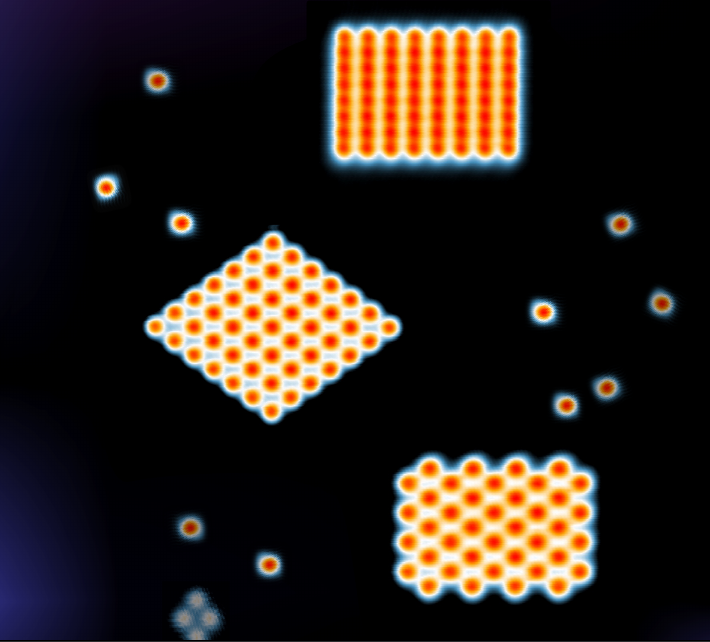Navigation auf uzh.ch
Navigation auf uzh.ch
Two dimensional topological crystalline superconductivity has been predicted and experimentally observed in two-dimensional Shiba lattices: these research results are now published in Nature Physics.

Two dimensional superconductors are a highly sought-after phase of matter, and their fundamental characteristic is the presence of Majorana modes at their boundaries. While these phases are elusive in natural compounds, they may be realised by designing artificial quantum materials.
Researchers in the Neupert group at the University of Zurich and in the Sessi group at the Max Plank Institute of Microstructure Physics in Halle, Germany, have predicted and experimentally realised two-dimensional superconducting “Shiba lattices” which show signatures of crystalline topology. These lattices consist of Yu-Shiba-Rusinov states, motivating the name “Shiba lattices”, which arise when magnetic adatoms are placed on the surface of a conventional superconductor. By assembling lattices of magnetic adatoms one-by-one, by means of scanning tunnelling microscopy techniques, the experimentalists have built different two dimensional structures, distinguished by the type of lattice in the bulk and termination geometry. Scanning tunnelling microscopy also allows to probe these structures with single-atom precision. The experimental measurements and theoretical predictions indicate that two of the structures host Majorana edge bands and higher order corner Majorana modes, respectively, which are protected by the crystalline symmetries of the sample and termination geometry.
This work shows that Shiba lattices are a promising a platform to design topological phases in two dimensional superconductors.